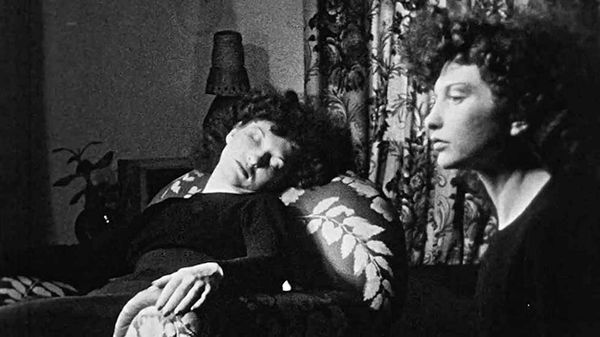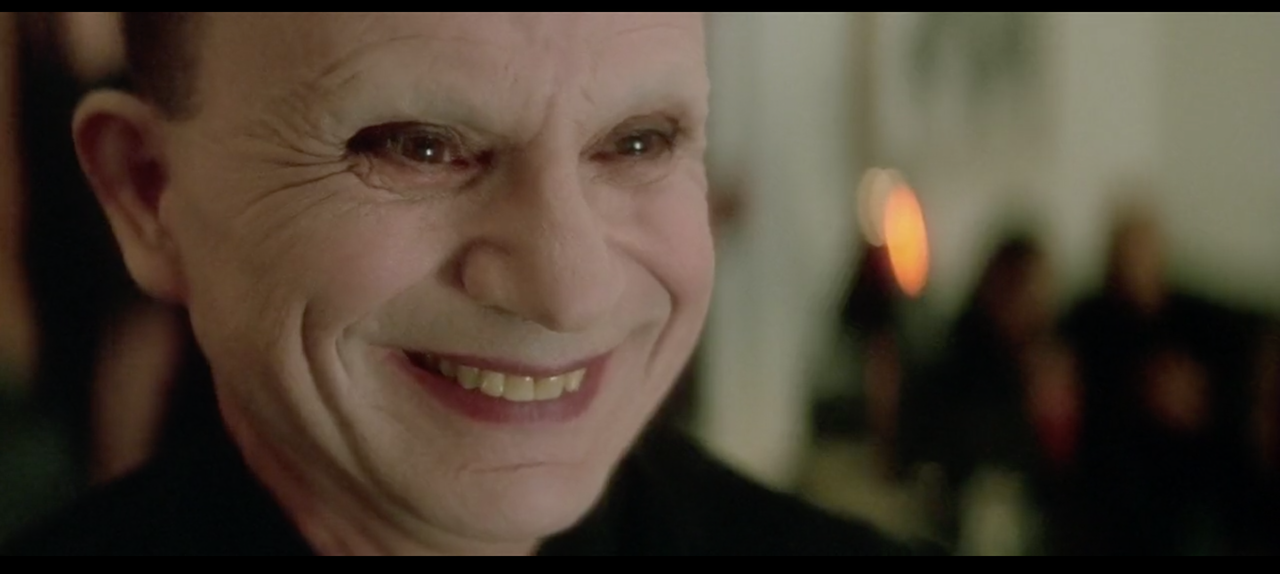“A woman in trouble.” These four words make up the only explanation David Lynch, famously obscure about the meanings of his often challenging and surreal films, has given for the especially difficult Inland Empire. The film completed an important cycle in his work, also including Lost Highway and Mulholland Drive, preoccupied with the fragile nature of identity. This cycle marked a period in Lynch’s oeuvre in which he drifted further from the confines of narrative cinema than he ever had before, making earlier films like Blue Velvet and Wild at Heart appear somewhat straightforward in comparison. Each of the films in the Identity Cycle follows a single character as they navigate through a nightmarish world of decreasing stability, slowly losing track of reality—and who they are—in the process.
Strange as these films are, they aren’t exactly without precedent in cinema. Surrealism has been a trend in film since the silent era (see Luis Buñuel’s Un Chien Andalou or Man Ray’s L’Étoile de Mer), and many European art filmmakers in the 1960s employed the style in a psychological manner comparable to Lynch (see Ingmar Bergman’s Persona or Federico Fellini’s 8½). But one of the earliest and most striking films to have a distinctly “Lynchian” look and feeling is "Meshes of the Afternoon," a 1943 short by pioneering female filmmaker Maya Deren. The “woman in trouble” tagline may well describe this film, and its blurred lines between dream and reality, looping narrative structure, recurring symbolic imagery, inventive use of the camera, and psychological preoccupations make it a clear precursor to Lynch’s Identity Cycle.
Deren herself stars in the film (which, along with directing, she also wrote, produced, and edited) as a mysterious woman returning to her home and lying down for a nap, only to find herself trapped in a labyrinth of bizarre and troubling occurrences. Like in Lynch’s Cycle, it quickly becomes uncertain what is reality and what is mere dream. One would assume the film begins in the real world and enters the land of dreams as Deren goes to sleep, but there are indications early on of the falsehood of this supposed reality. A peculiar, extended mannequin arm opens the film, carefully placing a flower on the street for Deren to find before she enters her home. This is easily comparable to the bizarre creature spotted behind an everyday restaurant early on in Mulholland Drive, which signals the viewer to question what they’re seeing from almost the very beginning. As "Meshes" runs, the lines between reality and fantasy only become further blurred.
A large contributing factor to this is the film’s use of repetition, also distinctly mirrored in Lynch’s Cycle. The supposedly “real” opening sequence of Deren entering the house and drifting to sleep is repeated three more times, each time from a different angle, and then one final time with a male character (the film's cinematographer and Deren's husband at the time, Alexander Hammid) in Deren’s place. Each time the sequence recurs, another entity resembling Deren is spawned, eventually building to a scene in which three Derens stare each other down intensely at a dinner table. The looping structure is a clear link to Lost Highway, which begins and ends with the same event from two different angles. At the beginning of Lynch’s film, the protagonist receives a cryptic message on his house intercom. At the end, it’s revealed that he left the message himself, in a puzzling time loop.
The imagery in Deren’s film likewise has a hand in this sense of recurrence. Many objects, ranging from mundane to highly unusual, appear and reappear until it’s clear that they must hold a degree of symbolic significance. These include the aforementioned flower as well as a knife, a key, an unhooked phone, a phonograph, and an ocean. Also regularly present is an enigmatic cloaked figure with a mirror for a face. Lynch’s Cycle, too, contains many obscure objects shown repeatedly, to the point of apparent significance. The various keys in Mulholland Drive explicitly resemble those in "Meshes," and the lamps in Inland Empire serve the same function. The mirror creature also has his descendants in each of the Cycle’s films, with the menacing and cryptic “mystery man” from Lost Highway and humanoid rabbits from Inland Empire being the most memorable examples of figures who aren't so much characters as they are evocative images.
Deren’s bold experimentation with the camera would be later echoed by Lynch all the same. In both cases this is never excessive, employed merely to help immerse the viewer in the world of the characters. Deren uses dreamy slow motion, jarring jump cuts, and exaggerated angles to embed the viewer deeply into the lead woman’s nightmare realm. One particularly startling moment has Deren launching a knife toward Hammid, only for his face (and the entire frame around it) to shatter like a mirror. Camera tricks are utilized to similar effect in Lost Highway, where frantic cutting creates disorientation during a scene of violent transformation, and in Mulholland Drive, where many images of a character’s face overlap in dissolve to emotionally indicate that she’s losing hold of herself.
This directly leads to perhaps the most important connection between the two filmmakers. For each, surrealism is a means of evoking the subjective psychological experience. Those earlier surrealists from the silent era (like Buñuel) tended to use the radical dream structure of their films to deliver one shock after another in an attack on comfy bourgeois culture. Deren was one of the earliest film surrealists who used the style to approximate the individual’s experience of a dream, and this is exactly what Lynch’s Cycle does at its core. Both "Meshes" and Lynch’s trio of films are dominated by point-of-view shots, typically intercut with reactionary close-ups of each film’s lead character. This serves to marry the perspective of the character with that of the viewer. In effect, the films become dreams that the viewer loses themself in with the protagonist, along with other members of the audience. Through film, something as personal and individual as a dream can be made into a shared experience, and both Deren and Lynch realized the value of this at the very center of their singular cinema.



